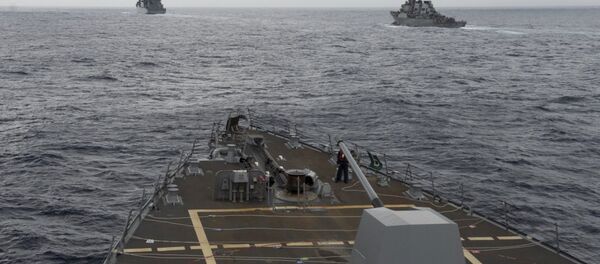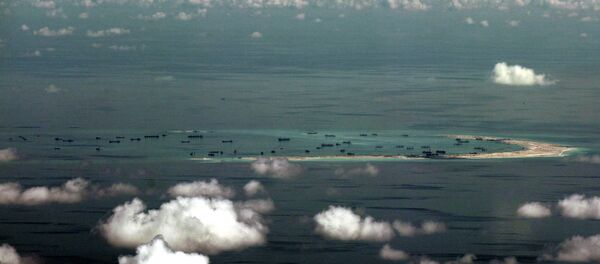"All 26 nations that participated in RIMPAC 2016 have been invited to return for RIMPAC 2018," a spokesman for the US Navy’s Third Fleet told Defense News.
Washington has adopted a more conciliatory policy toward China in the South China Sea, coinciding with US President Donald Trump’s increased reliance on Chinese leadership to mitigate the threat of a nuclear-capable North Korea. With one exception, on May 26, the Pentagon has rejected multiple admiral requests to conduct FONOPs, or freedom-of-navigation operations, in the sea.
Beijing blasted the first FONOP of 2017, however. "China expresses strong protest and has already made representation to the US side in connection with such a demonstration of military force, boost to the militarization of the region and actions that can easily lead to incidents at sea and in the air," Chinese Defense Ministry representative Ren Guoqiang said.
Some analysts in Washington have encouraged the Pentagon to continue conducting the operations. A researcher at the Center for Strategic and International Studies told the Financial Times: “Freedom of navigation in the western Pacific is too important to be traded away for dubious Chinese pledges of cooperation on other issues, even if they are as important as North Korea.”
Half a dozen nations have laid claim to the South China Sea’s abundant fisheries and natural resources. Malaysia, Taiwan, China, the Philippines and Vietnam all have military resources stationed on the Spratly Islands, for instance, while Brunei has staked a claim to an exclusive economic zone over the southeastern Spratly Islets. The US is critical of Beijing’s ambitions to claim a lion’s share of the South China Sea’s maritime territories and resources, despite Washington itself holding no claims on the region.
Beijing has also installed missile systems on Hainan Island in the South China Sea to project power against potential adversaries, Sputnik reported May 9. According to South Front, “Beijing already has at least seven such [military and logistical] bases,” on artificial islands “equipped with access channels, helipads, radar facilities, gun and missile emplacements, piers, military facilities and other objects of strategic importance.”
Despite the incommensurability of Washington and Beijing’s stances on the South China Sea, RIMPAC offers an opportunity to build mutual ties at Pearl Harbor in Hawaii. The drills are considered by some as the largest gathering of the world’s navies.
The PLA-N has yet to accept Washington’s invite, according to Defense News, to bring four or five ships to the exercises.
China participated in RIMPAC in both 2014 and 2016 — and sent an uninvited surveillance and intelligence gathering vessel to monitor the activities on both occasions, according to US Naval Institute News and Defense News reports.




